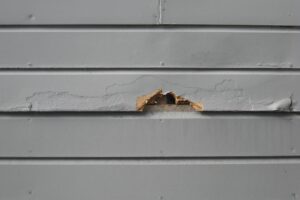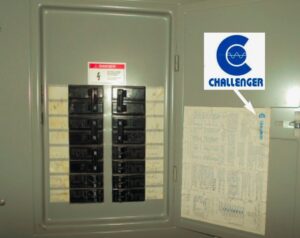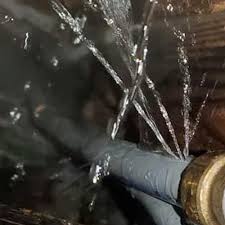


When we think of the 1990s, we often reminisce about the fashion, the music, and the pop culture that defined the era. But for homeowners who live in homes built during that time, there’s a less nostalgic aspect to consider: the building materials. Some of the most commonly used materials in the 90s—like polybutylene piping, hardboard siding, and Challenger electrical panels—pose serious safety risks that continue to affect homeowners today. Let’s dive into why these materials were used, why they can be dangerous, and how to protect yourself if your home contains them.
1. Polybutylene Pipes: A Plumbing Disaster Waiting to Happen
Polybutylene pipes were once heralded as a revolutionary alternative to copper and galvanized steel. Lightweight, flexible, and easy to install, they became a go-to option for plumbing systems in homes built between the late 1970s and the mid-1990s. However, over time, this seemingly perfect solution proved to be anything but.
The Problem: Polybutylene pipes degrade over time, especially when exposed to chlorine found in public water supplies. This causes the pipes to become brittle, crack, and eventually rupture. Homeowners with polybutylene pipes are at high risk of unexpected water leaks, flooding, and extensive damage to their homes. The problem is compounded by the fact that many homeowners may not even know they have polybutylene pipes until a disaster strikes.
The Solution: If you’re buying a home that was built in the 90s, it’s crucial to have the plumbing inspected for polybutylene pipes. If you do have them, consider replacing them with more durable options like PEX or copper. Replacing these pipes can be a costly but necessary investment to avoid potential water damage in the future.
2. Hardboard Siding: The Hidden Wood Rot
In the 1990s, hardboard siding (also known as Masonite siding) was a popular choice due to its low cost and easy installation. This engineered wood product is made by compressing wood fibers with resin and wax to create panels that mimic the appearance of traditional wood siding.
The Problem: While hardboard siding may have looked good when it was first installed, it has a significant flaw: it’s highly susceptible to moisture damage. Over time, water seeps into the material, causing it to swell, warp, and rot. This not only compromises the integrity of the siding itself but also exposes the home to potential mold and mildew growth. In some cases, extensive damage to the underlying structure can occur, leading to expensive repairs.
The Solution: If your home has hardboard siding, it’s important to regularly inspect it for signs of damage, such as peeling paint, discoloration, or visible rot. If your siding is beyond repair, replacing it with a more durable material like fiber cement or vinyl can help prevent further damage.
3. Challenger Electrical Panels: A Fire Hazard in Your Home
Electrical panels are critical components of any home’s safety system, controlling the distribution of electricity throughout the building. In the 1990s, Challenger electrical panels were commonly used in residential homes due to their affordability and widespread availability. However, these panels have since been identified as dangerous due to a design flaw that makes them prone to overheating and fires.
The Problem: Challenger electrical panels are known to have faulty breakers that fail to trip when an electrical overload occurs. This can cause circuits to overheat, leading to the risk of electrical fires. In fact, these panels have been linked to a number of fires, some of which resulted in significant property damage.
The Solution: If you have a Challenger electrical panel, it’s crucial to have it inspected by a licensed electrician. In many cases, it may be necessary to replace the entire panel with a newer, safer model to ensure that your home is protected from potential electrical hazards.
Why These Materials Were Used in the 90s
So, why were these materials so widely used in the first place? In the 1990s, cost-efficiency and ease of installation were key factors in the construction industry. Builders often chose materials that were affordable and promised to cut down on labor time. Unfortunately, the long-term risks associated with these materials were not fully understood at the time.
Protecting Your Home and Family
If you live in a home built in the 1990s, it’s important to be aware of the potential dangers lurking in your building materials. Here are some steps you can take to ensure your home remains safe:
- Have your plumbing inspected: If your home has polybutylene pipes, consider replacing them with more durable materials like PEX or copper.
- Check your siding: Inspect your hardboard siding regularly for signs of water damage or decay, and replace it if necessary.
- Get your electrical panel checked: If your home has a Challenger electrical panel, have it evaluated by a licensed electrician. If it’s deemed unsafe, plan for a replacement.
While the 90s may seem like a simpler time, the building materials used during that era can pose serious risks to homeowners today. By staying informed and proactive, you can help protect your home, your family, and your investment from the hidden dangers of these outdated materials.


.png)



